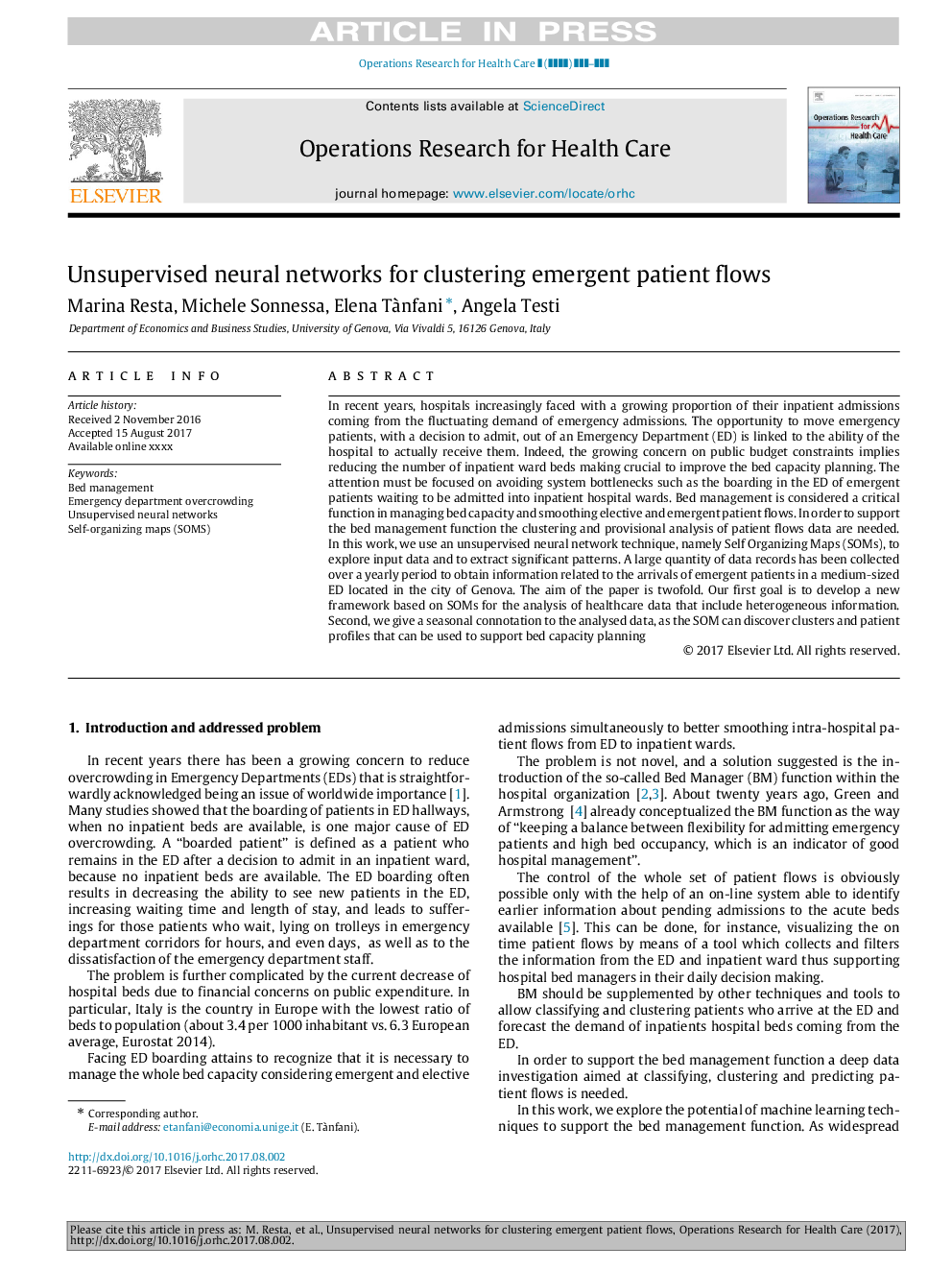| Article ID | Journal | Published Year | Pages | File Type |
|---|---|---|---|---|
| 7543524 | Operations Research for Health Care | 2018 | 11 Pages |
Abstract
In recent years, hospitals increasingly faced with a growing proportion of their inpatient admissions coming from the fluctuating demand of emergency admissions. The opportunity to move emergency patients, with a decision to admit, out of an Emergency Department (ED) is linked to the ability of the hospital to actually receive them. Indeed, the growing concern on public budget constraints implies reducing the number of inpatient ward beds making crucial to improve the bed capacity planning. The attention must be focused on avoiding system bottlenecks such as the boarding in the ED of emergent patients waiting to be admitted into inpatient hospital wards. Bed management is considered a critical function in managing bed capacity and smoothing elective and emergent patient flows. In order to support the bed management function the clustering and provisional analysis of patient flows data are needed. In this work, we use an unsupervised neural network technique, namely Self Organizing Maps (SOMs), to explore input data and to extract significant patterns. A large quantity of data records has been collected over a yearly period to obtain information related to the arrivals of emergent patients in a medium-sized ED located in the city of Genova. The aim of the paper is twofold. Our first goal is to develop a new framework based on SOMs for the analysis of healthcare data that include heterogeneous information. Second, we give a seasonal connotation to the analysed data, as the SOM can discover clusters and patient profiles that can be used to support bed capacity planning
Related Topics
Health Sciences
Medicine and Dentistry
Public Health and Health Policy
Authors
Marina Resta, Michele Sonnessa, Elena TÃ nfani, Angela Testi,
